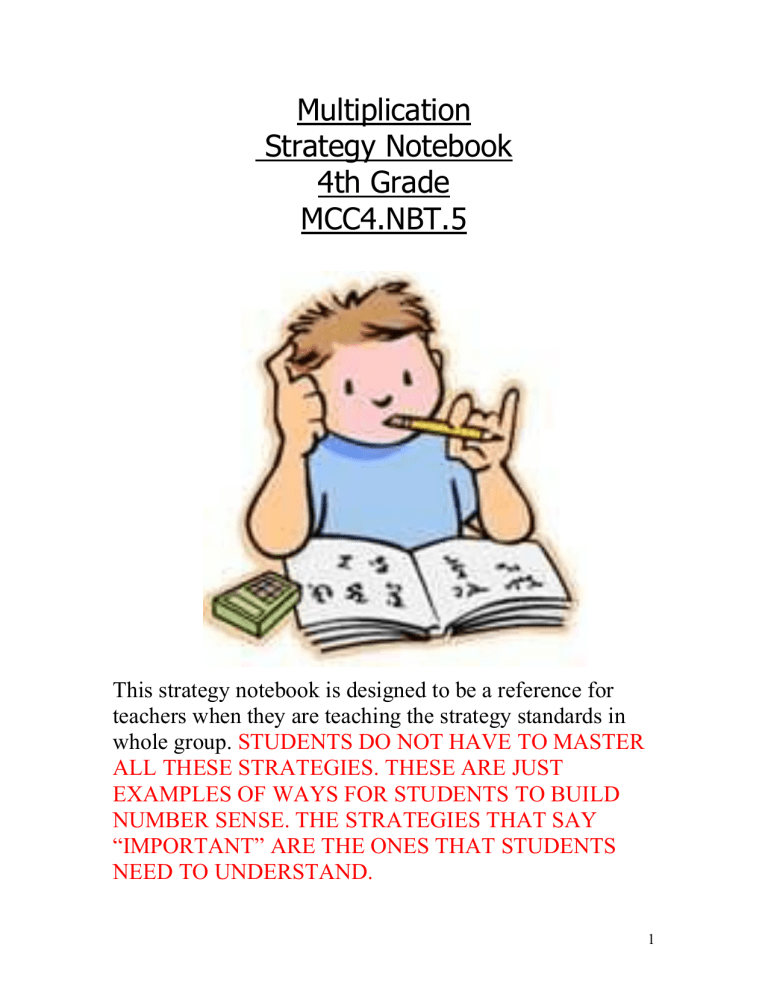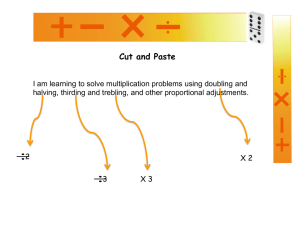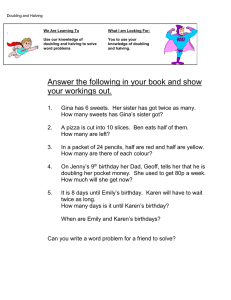
Multiplication Strategy Notebook 4th Grade MCC4.NBT.5 This strategy notebook is designed to be a reference for teachers when they are teaching the strategy standards in whole group. STUDENTS DO NOT HAVE TO MASTER ALL THESE STRATEGIES. THESE ARE JUST EXAMPLES OF WAYS FOR STUDENTS TO BUILD NUMBER SENSE. THE STRATEGIES THAT SAY “IMPORTANT” ARE THE ONES THAT STUDENTS NEED TO UNDERSTAND. 1 Repeated Addition This is a low level strategy used by students who do not yet break numbers into tens and ones. Partitioning Strategies Students break numbers up in a variety of ways reflecting their understanding of base-ten concepts. By Decades: By Tens and Ones: 2 Making Landmark and Friendly Numbers Strategy Sometimes a multiplication problem can be made easier by changing one of the factors to a “friendly” or “landmark number”. Friendly numbers are numbers that end in 0. They are called friendly because once the rule for multiplying 0 is understood, that understanding can be extended to larger numbers that end in 0. Landmark numbers are similar to friendly numbers. Some examples are 25, 50, 75, 100. A common error students make is that they forget to adjust the number of groups. Look at this problem: 9 x 25. If the 9 is changed to 10 (friendly number), then the product of 250 would need to be adjusted not just by 1 but by one group of 25. Here are some problems you can use that support “Making Landmark or Friendly Numbers.” 5 x 19 16 x 25 4 x 49 53 x 48 4 x 249 36 x 20 8 x 199 5 x 359 36 x 19 12 x 149 3 “Partial Products” Strategy (Important) This strategy is based on the distributive property. When students break apart factors into addends (through expanded form and distributive property), then they can use the smaller problems to solve more difficult ones. As students invent “partial product” strategies, they can break one or both factors apart. While both factors can be represented with expanded notation, it is sometimes more efficient to keep one number whole. Example of “Partial Products” with the problem 12 x 15: 4 Here are some problems you can use that support “Partial Products.” 13 x 15 15 x 11 14 x 16 25 x 14 15 x 33 35 x 24 4 x 532 8 x 112 8 x 256 6 x 325 An area model can be used to model the student’s strategy of partial products. CCGPS states that the student should “illustrate and explain the calculation by using equations, rectangular arrays, and/or area models”. 5 “Doubling and Halving” Strategy Consider all the different arrays we can make with an area of 12. 1 x 12 2x6 3x4 6x2 12 x 1 In the following factor pairs we still have an area (product) of 12 but our factors have changed. The factors on the left double every time, and the factors on the right halve each time. This strategy can work with several different problems but some problems do not lend themselves to doubling and halving. This strategy helps because it changes the problem into simpler numbers. Once you reach a point where the numbers are easy for you to work with, then you stop doubling/halving and solve the problem. Here are some problems you can use that support “Doubling and Halving.” 8 x 125 16 x 180 345 x 8 36 x 14 26 x 12 12 x 15 4 x 140 32 x 90 16 x 35 180 x 6 6 “Breaking Factors Into Small Factors” Strategy The associative property is the heart of this strategy. It is a great mental strategy to use when the problems become larger. One of the factors then can be changed to a one-digit multiplier. 7 Here are some problems you can use that support “Breaking Factors Into Smaller Factors.” 12 x 25 8 x 35 16 x 25 24 x 15 72 x 15 24 x 9 16 x 45 32 x 8 12 x 15 36 x 15 8




